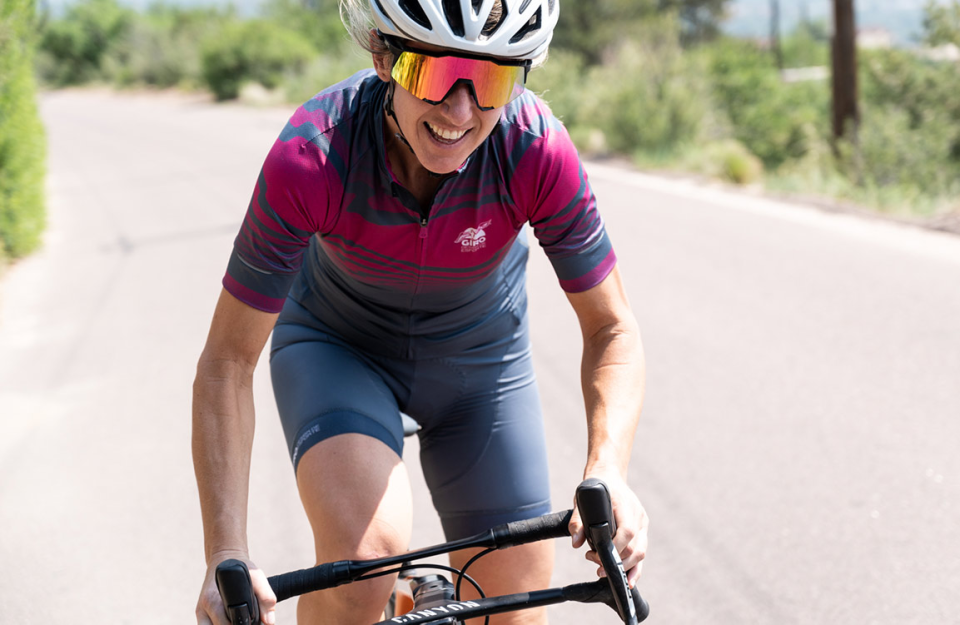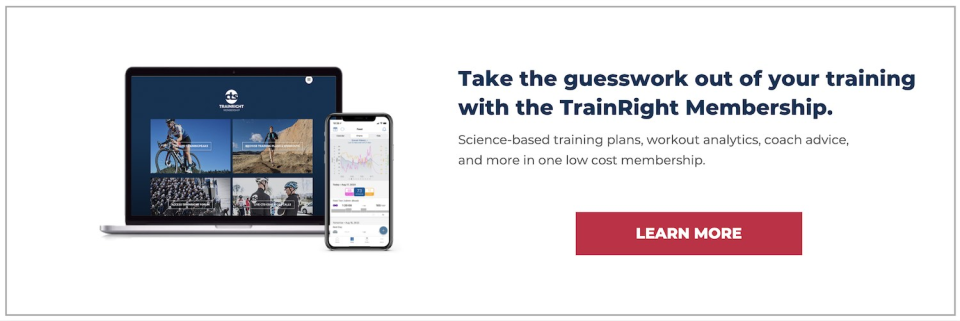Which is Better: Two Shorter Rides or One Really Long Ride?
CTS was asked the Question: “Would it be preferable to ride 6 hours in one day with a day off following, or 2 days back to back for 3 hours? Obviously a person can ride harder each day for 3 hours but if the objective is staying in the middle of the endurance zone and that can be maintained for 6 hours is there a difference in benefit?”

NOTE: This specific question is about 3-hr and 6-hr rides. “Short” and “long” are relative based on your fitness and experience level, but for simplicity sake I’m going to stick with the 3- and 6-hour example. It is also important to realize these are generalized recommendations meant for moderately-fit amateur athletes. Ideally, all training is designed specifically for the demands of your goal event, your current training load, experience level, and fitness level.
There are a lot of training aspects we could focus on just from that short paragraph, but the crux of the question is whether it’s better to ride at a higher power output for two shorter rides, or a lower power output for one steadier ride. The short answer is that both scenarios have a place in your training, but for different reasons. Here’s what I mean:
Two Back-to-Back “Shorter” Rides
Generally speaking you can ride at a higher average power during a 3-hr ride compared to a 6-hr ride. Even if you’re aiming at staying in an endurance training zone, you will still have a higher overage power over 3 hours compared to 6 because fatigue will cause you to slow down in the final hours of the longer ride. But what does that mean for your training?
Endurance is rarely your limiting factor
Even if you’re training for a long endurance event, aerobic endurance is rarely a limiting factor. A moderately-trained athlete can reach the finish line of almost any endurance event. Your training will affect how fast you finish and how enjoyable the event is, but for the audience reading this blog, you have the endurance to finish already. More generalized endurance won’t improve your performance; specific energy system work (particularly power at lactate threshold) will. This means I prefer to focus training on maximizing training quality (higher power output, more time-at-intensity) so you can get to the finish faster, more comfortably, and achieve your performance goals.
Shorter sessions are easier to recover from
Even though you’re going to go harder during a shorter ride, you will be able to recover more quickly from that session compared to a much longer ride. Your overall kilojoule count will be lower. You’re going to be able to replenish your hydration status and caloric expenditure more easily, and you’ll be more functional for the remainder of your day (a valid concern for amateur athletes who have a long list of things to accomplish on weekend days). Of course, this is not always the case. You could go ballistic for 3 hours and come back as shattered as you might be from a more moderate 6-hr ride. You could suffer from heat stress and hydration issues in a hard 3-hr session, too. But in most typical cases, the shorter sessions are easier to recover from. This means your ride the next day can also be a high-quality training session.
Shorter rides add training stress incrementally
This also brings up the idea of frequency in training. Rides induce training stress, and rest allows time for adaptation. But fitness also decays as you rest, which is why the amount of time between training sessions becomes important. For the rider who can choose between one long ride per week or two shorter rides, two rides per week will often prove more beneficial. Even with the big dose of training stimulus from, say, a long Sunday ride, you’ll reach a point where the fitness decay over 6 days of rest is equal to or greater than the training stimulus from your last ride. Your fitness will stagnate or plateau. Increasing frequency (with adequate rest days between rides) lets you add stimulus incrementally.
Shorter rides are effective for improving power and speed
If your goal is to get ready for a great performance at a goal event or in pursuit of a personal goal, only do as much work as you need to do. Extra work at ineffective intensities just add fatigue, which you have to recover from before you can train effectively again. It has been proven time and again that improved power at aerobic, lactate threshold, and VO2 max intensities can be accomplished with relatively short rides that include intervals to accumulate time-at-intensity. Particularly for higher intensities (lactate threshold and above), the maximum time an athlete can ride effectively at a given effort level is limited, and once you have maxed out that time, the goal of the workout is accomplished and you can be done. Improving lactate threshold power will make your performance in long – even ultradistance – events better. As I’ll explain below, the long training sessions are necessary, but for a different reason.
One Long Ride
The fact you can develop the fitness for great performances in long-distance/duration events with shorter rides doesn’t mean you should avoid huge rides. Not only is the all-day ride a big part of the reason we love cycling, it is also a necessary component of training for big events. It’s just that while there are some physiological benefits from long rides, they are similar to those from shorter rides and they aren’t the most important training benefits of those 6-hour rides anyway.
Nutrition/Hydration Strategies
One of the biggest benefits to your 6-hour ride is the opportunity to test and hone your nutrition and hydration strategies. You can make some pretty big mistakes in a 3-hour ride (or a one-hour ride) and get away with it. Those mistakes will be a lot more noticeable and detrimental when you go long. If you’re preparing for a really long goal (100-mile MTB race, long course triathlon, gran fondo, gravel race, etc.), it is crucial to learn what foods work for you several hours in. Just as important, you need to learn how to eat and drink in the first 3 hours when you’re going to be on the bike for another 3-6 hours after that! You can’t learn that in the shorter training sessions.
Bike Fit and Contact Points
Just as your nutrition/hydration strategies need to be tested and honed in long rides, so does your bike fit. A riding position that is powerful and comfortable for 3 hours might be utterly unbearable after 6 hours or more. You may not have a sore neck, numb hands, or hot spots on your feet during short rides, but if you’re event is a long one you need to make sure your position and contact points (saddle, bars/grips, pedals) are still comfortable and effective many hours later.
Mental Toughness
To be 100% Prepared for your event you have to train your mind as well as your body. Can you remain focused 6 hours in? 12 hours? During the DK 200 gravel race one year I remember riding into a stiff headwind, almost entirely without a draft, for 70 miles. Physically, it wasn’t that terrible. I just maintained a power I knew I could maintain and let the speed be what it would be. But mentally it was awful. Even with 40+ years of cycling experience in all kinds of races and conditions, there were times when I wanted to quit. I had to call upon mental skills and reserves of determination to keep plowing forward. Long training sessions – especially solo training sessions – are essential for developing the mental toughness to make it through the rough times in endurance events.
What You Should Do
The best solution is not a choice between short and long rides but a combination of both. You could, for instance, devote some weekends to back-to-back 3-hour rides and focus on developing fitness (power and speed). Other weekends commit to one big, long ride and focus on the skills, techniques, and habits that make long rides successful. Your goal is to finish those long rides tired but not so shattered that the last hour is a death march. The important thing to remember is that it’s not the individual comparison between two short rides and one long ride that matters; it’s the how the two scenarios impact your fitness and performance over the long term.
To find out more, please visit: https://trainright.com/two-shorter-rides-or-one-really-long-ride
FREE 14 DAY MEMBERSHIP TRIAL
Gran Fondo Guide fans, click on the image above and get TrainRight Membership for a 14 day no obligation trial. TrainRight Membership comes with a 30-day money-back guarantee!
About CTS
As it has since 2000, Carmichael Training Systems leads the endurance coaching industry with proven and innovative products, services, and content. And the results speak for themselves; no other coaching company produces more champions, in such a wide variety of sports and age groups, than CTS.
For more information, please visit: https://trainright.com

